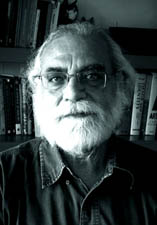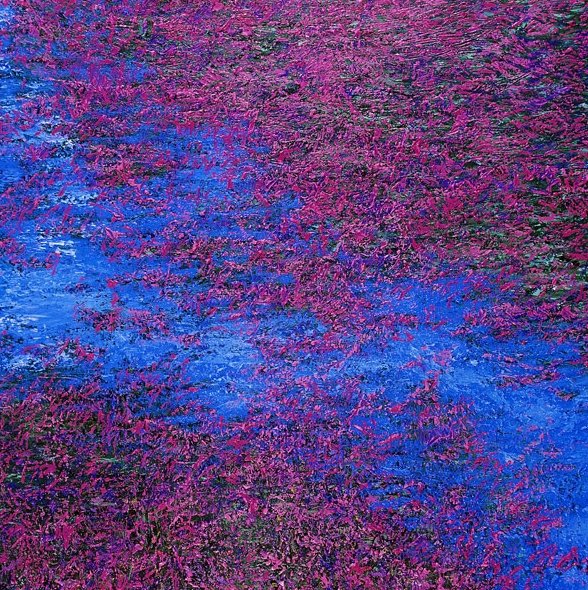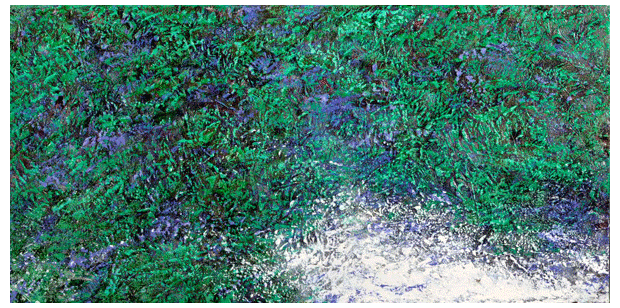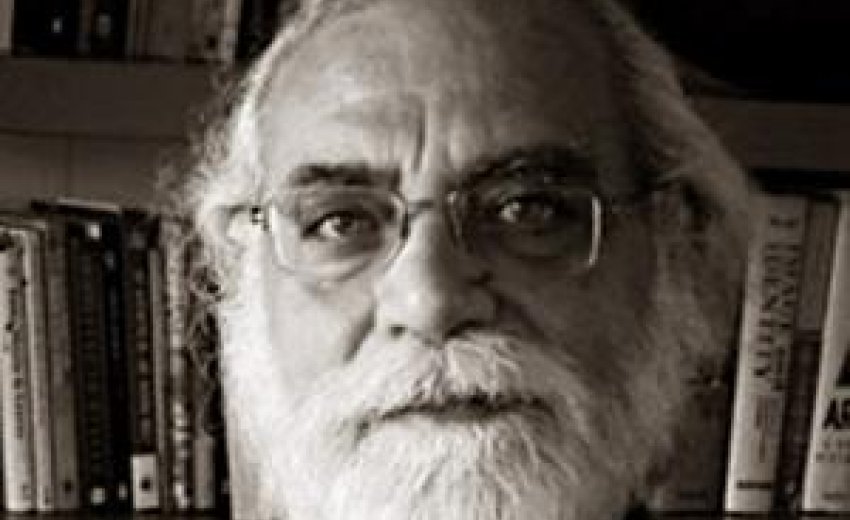
"I am a very simple artist who speaks in the language of pigments." This modest refrain of artist Paramjit Singh may not throw light on his eminence or the significance of his masterly strokes and splendid landscapes. But nothing can cloud the fact that the visual vocabulary he creates has critics lauding and fellow artists gushing, some like Gulam Mohammed Sheikh dubbing his works as "visual hypnotism".
Seriously, where in congested Delhi does he find such astounding beauty? Contrary to popular belief, Singh contends that Delhi is not devoid of nature. Says he: "Just move beyond and step into Lodhi Garden, Nehru Park and you will find the resplendence of nature."
Of course, much of what he paints does come from within him but he interjects, "What has been internalised too has been stimulated by one’s environment." Often he shares an artist’s creative impulses are triggered by small things, too. For instance, outside his office there was a majestic Kikar tree. He recalls, "For years, I was witness to its graphic quality till one day it came into my works." Indeed, much that is buried in the distant past comes calling, too. Thus, those memories of Lahore, and dry lands of Rawalpindi have also shaped him. Says he: "Most of us equate landscapes with mountainous terrains. But flat landscapes can be very interesting, too."

Of course, on his canvas these are imbued with more than detailing and depth. Brimming with a transcendental quality, his paintings have a lyrical musicality as well as metaphysical mysticism. Is he a bit of a mystic? Yes and no, but he did grow up listening to Gurbani, verses of Kabir and Guru Nanak Dev, Bulle Shah’s poetry and much more.
So, did he experience a clash of sorts when he enrolled at the School of Arts, Delhi Polytechnic? He answers: "Not at all, it was at Delhi College when I was all of 18, where I met teachers like Sailoz Mookherjea, also a landscape painter, that I really began to understand what art means." As the world of impressionist painters of Renoir and Degas and of post-impressionists like Gogh opened up, his own process of evolution, which had begun in childhood, firmed up further. In between, he was equally taken in by the stillness of Italian technique, picture metafisica, a short-lived school in Italian art.
In his paintings, silences are evocative. Meditative quietude manifests itself in each blade of grass, each blossom, shrub that all come together to create a harmonious balance. What explains his incessant affaire de amour with nature? And he smiles: "Nature is unending, evergreen and ever fresh. Its reservoir has infinite possibilities. Nature changes by the minute and I need not look elsewhere."
Back from an exhibition of Asian artists in Kyoto, Japan, he is happy that several young artists in China and Japan, too, are using nature and its many elements as leitmotif in their works. Closer home, he observes young artists have veered towards technology- aided art. He has nothing against it, "If an artist is comfortable with it, by all means" and appreciates Ranbir Kaleka’s works in particular. But for himself, the direct intimate interface with colors, versatile medium of oils is enriching and energising. He adds: "I get tired if I use computer for half an hour. But in front of the canvas, I can stand and paint for hours at a stretch."

Price, however, he asserts is never a barometer of good art. So, neither he nor his wife famed artist Arpita Singh, whose work sold for a staggering Rs 9.6 crores, let auction prices go to their head or determine the market prices of their paintings. On astronomical price tags, all he would say is: "Today, so many commercial galleries with vested interests have sprung up. Art collectors have limited knowledge and often some artists and their works are hyped unnecessarily." But he is not affected by the commercial razzmatazz. For him, in the process of creation, of mind, body and soul coming in sync lies the exhilaration. And to those who think he has stagnated and stuck up in a fixed style, all he would say is,
"The roots of my inspiration are very deep not floating on the surface which can be cut asunder." No wonder, he continues to grow and flower with each canvas and each new work. Like nature, his muse, the continuum of regeneration rolls on.

